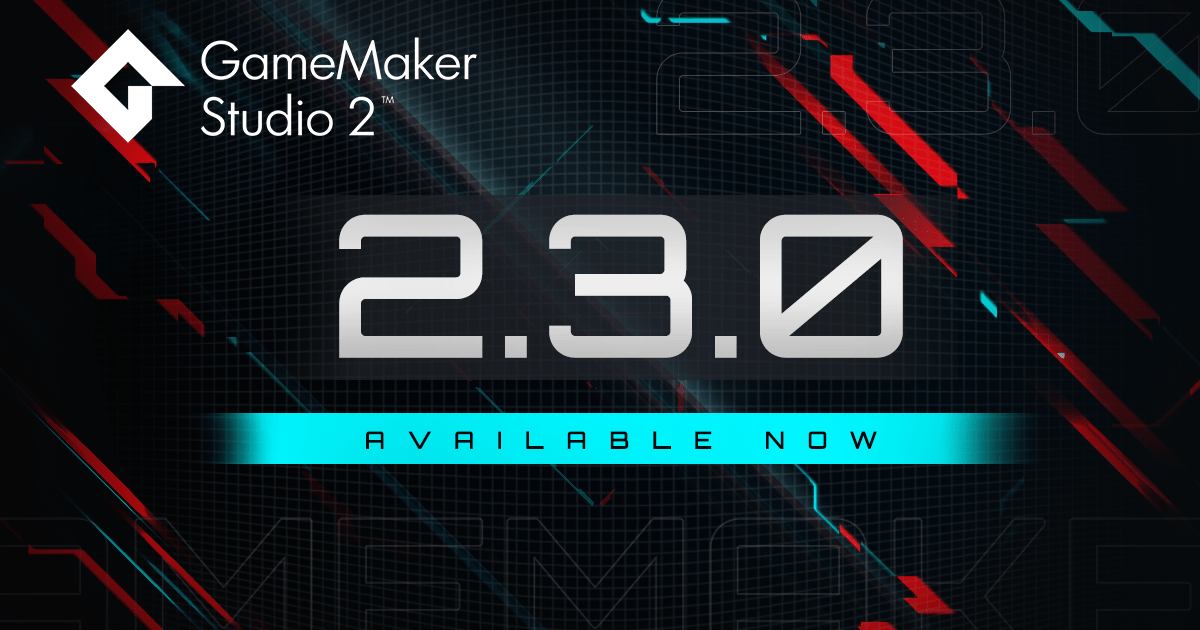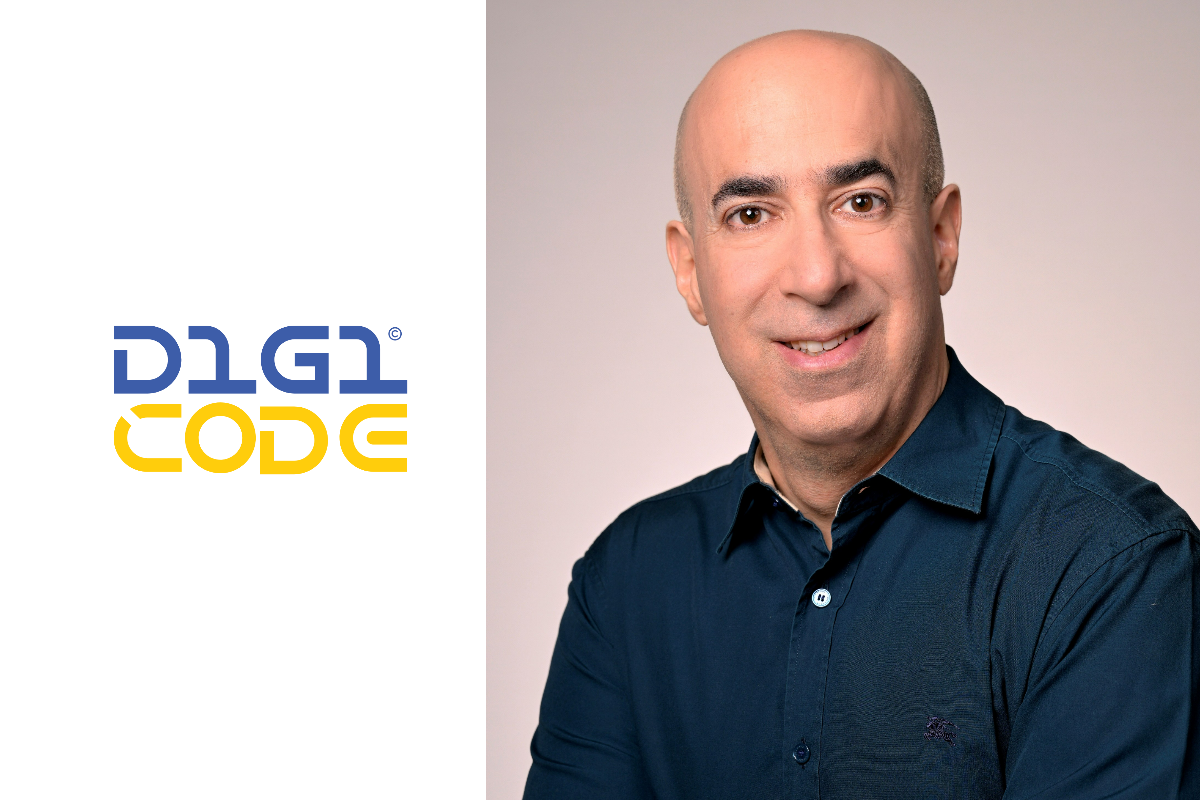Latest News
YoYo Games launches GameMaker Studio 2 version 2.3

Biggest update since GameMaker Studio 2 combines GML and IDE improvements with powerful new tools to create and manipulate animation
YoYo Games announced the release of GameMaker Studio 2 version 2.3 – the biggest update of the multi-million downloaded 2D development technology since the release of GameMaker Studio 2.
The highly-anticipated update comes packed with a host of GameMaker Language (GML) and Integrated Development Environment (IDE) improvements, alongside a raft of powerful new features designed to make creating beautiful games as easy and accessible as possible.
“With version 2.3 of GameMaker we’ve not only changed the best practices for doing almost everything in GML, but with new features like Sequences and Animation Curve we’ve introduced incredibly powerful new tools which continue to open-up GameMaker Studio 2 to people who are less experienced with code and who prefer a more visual approach to making games”, said Stuart Poole, General Manager, YoYo Games. “This ability to synchronise audio and animation and invoke instances of it at any point through game logic is going to increasingly add a huge amount of polish to games, by giving content creators a very high level of control over how their designs are implemented within the game.”
One of the most anticipated new features is Sequences – an easy-to-use tool for adding sound and animation to visual assets. Used in conjunction with another new top-level feature, Animation Curves, Sequences enables artists to unleash their creativity to create dynamic animations and cut-scenes, all without needing a coder to change every pixel.
“Developing cutscenes or complex animations may have been difficult before but has been streamlined tremendously with Sequences. With just a couple of keyframes, I’m able to see my animation come to life immediately and make small adjustments to get it just right,” said version 2.3 closed-beta participate Sam Baylus from MashArcade, adding: “Sequences allow me to work quickly, efficiently, and more intuitively than ever before and developers have only begun to scratch the surface of what Sequences is capable of.”
Developer and closed-beta participant Gurpreet Singh Matharoo is also excited by the potential of Sequences: “There is so much I like about v2.3, but Sequences outshines them all. There’s so much you can do with them. Animations and cutscenes are the obvious ones, but even GUI design, audio sequencing, template design (for example, pattern of incoming enemies in a space shooter game), and so much more that is yet to be discovered.”
In addition to the streamlined new project format, the latest update also sees the Resource Tree replaced with the Asset Browser, in a significant IDE upgrade which offers developers a completely redesigned way to create, manage, tag and filter their assets. Developer JuJu Adams, who has been using version 2.3 during closed-beta, was particular impressed by the new Asset Browser: “The biggest workflow improvement is ensuring merge conflicts in source control no longer require Bletchley Park to decrypt. That resources can be anywhere is a game-changer for many reasons, not least because you can communicate a lot of information about the underlying structure of a game just through your Asset Browser tree.”
With no barriers to entry and powerful functionality, the engine enables both experienced and novice video game developers to create the games they imagine. GameMaker Studio 2 version 2.3 combines easy-to-use drag-and-drop tools, tutorials and game assets with the powerful GameMaker Language (GML) and advanced, professional functionality, like the physics engine, particles and advanced shaders.
GameMaker Studio 2 can be purchased for Windows desktop, Mac OS X, Ubuntu, Android, iOS, Amazon Fire, Microsoft UWP, HTML5, Nintendo Switch, PlayStation 4, and Xbox One, starting from $39usd.
Powered by WPeMatico
Central Control
Hyperlocal vs. Global: Is the Future of iGaming in Deep-Market Strategy?

Reading Time: 3 minutes
Itai Zak, Executive Director of iGaming at Digicode and former CEO of SBTech, the tier-one sportsbook and technology provider acquired by DraftKings in 2019, also serves as CEO of Gemstone Interactive, a boutique solutions partner for iGaming operators. A veteran executive and long-time advocate of player-first innovation, he offers a sharp look into the future of iGaming. With a history of guiding major brands through expansion and transformation, Zak is not someone who follows trends for the sake of activity. In his view, the real battleground for long-term growth is not how many markets an operator enters but how deeply they engage in the ones they already serve. His question to operators is direct and strategic: Where are you truly winning, and why?
Let’s explore the deep-market strategy powering sustainable growth, blending financial realism, adaptive tech, and real-time personalization into a focused vision that favors precision over presence.
Why Global-First Is Losing Ground
Just a few years ago, a successful operator was often defined by their geographic footprint. Launching in multiple regions created the illusion of momentum. But today, market saturation, regulatory fragmentation, and rising player expectations are exposing the limitations of this model.
Itai Zak explains that, “Europe was once a centralized opportunity. Today, it’s ten different countries with ten different frameworks.” From a compliance and cost perspective, this has created operational bottlenecks. Each jurisdiction now requires bespoke workflows, regulatory reporting, responsible gaming oversight, and even tailored user experiences.
Worse, players have evolved. A “universal” interface or product no longer works across markets. In emerging territories such as Brazil and India, success depends heavily on how well an operator adapts to cultural preferences, local payment systems, and region-specific content.
The Rise of Deep-Market Strategy
What we’re witnessing is a strategic shift from volume-based growth to depth-based dominance. There are 4 main drivers behind this pivot:
1. Fragmented Regulation Requires Granular Commitment
The days of a single gaming license acting as a passport are over. Today, compliance is not just about legality; it’s about infrastructure. Operators must build and maintain localized compliance engines to keep up with rapidly evolving standards. “What works in Sweden will likely fail in the Netherlands. Operators need dedicated regulatory teams per region.”
2. Player Experience Is Hyperlocal by Default
Consumer expectations are shaped by local context. Nordic players prefer richer desktop UIs and immersive casino features. In contrast, Indian players expect mobile-first simplicity and local payment flows like UPI. LATAM regions are seeing explosive growth, but only for operators who integrate payment rails like PIX and deliver Spanish/Portuguese-tailored content.
Uniformity no longer means scalability; it means irrelevance.
3. Efficiency Beats Vanity Expansion
There’s a growing recognition that it’s better to be exceptional in one market than average in many. Deep-market strategy prioritizes:
- Higher Lifetime Value (LTV)
- Increased retention
- Lower Customer Acquisition Cost (CAC)
- Improved regulatory predictability
4. Retention Is the New Growth Lever
Global growth might bring short-term user acquisition, but retention requires local trust, familiarity, and relevance. The deeper your market understanding, the more likely you are to convert players into loyal customers.
Is Global Expansion Dead?
Not quite. What’s emerging is a hybrid model – global infrastructure combined with hyperlocal execution.
Basically, this dual-layered approach is “a shared chassis with localized controls.” Operators need scalable back-end platforms – compliance engines, CRM systems, bonus engines, but allow for front-end freedom. Local marketing, payment, and content teams execute based on what actually works on the ground.
In practice, this means:
- Platform consistency at the core (RGS, risk, KYC, CRM)
- Market-specific UX/UI, payment flows, and offers
- Country-level dashboards to monitor local KPIs
- Flexible brand architecture to launch sub-brands per market
Knowing When to Deepen vs. Expand
There is a straightforward framework to determine whether it’s time to grow outward or dig deeper:
Expand if:
- You’ve fully optimized LTV in your current markets
- Your infrastructure can absorb additional regulatory complexity
- You have access to local partners or brands in the new region
Deepen if:
- Your retention or conversion metrics are below industry benchmarks
- There’s untapped potential in localized features or payment integrations
- Local competitors are outperforming despite a smaller reach
This lens helps operators avoid reactive expansion and instead invest where sustainable growth is most likely.
The Digicode Approach: Local Autonomy, Central Control
At Digicode, we’ve seen this shift firsthand. The operator clients are no longer asking for “just another multilingual skin.” They’re asking for:
- Modular platforms that can launch and manage multiple brands with independent rulesets
- Configurable compliance per market
- Local bonus engines that adapt to regulatory constraints
- Player lifecycle tools tuned for cultural buying behavior
What powers this? Our ability to separate back-end scalability from front-end customization, giving operators speed, control, and precision as they go deeper into high-performing markets.
Final Thought: Strategy Is Local
The market is maturing. The future of iGaming isn’t about being everywhere, but being someone to someone in specific markets. The brands that win long-term will be those that go deeper than their competitors are willing to, speak to players with cultural fluency, and build infrastructure that adapts intelligently.
Itai Zak put it simply: “Don’t ask how many countries you’re in. Ask where you’re winning and why.”
If local precision is your next competitive edge, Digicode’s experts can help you deliver it without losing control of the big picture.
The post Hyperlocal vs. Global: Is the Future of iGaming in Deep-Market Strategy? appeared first on European Gaming Industry News.
Black Cow Technology
Inside Black Cow’s Decision To Go All In On Multiplayer

Reading Time: 3 minutes
Black Cow Technology Founder and CEO, Max Francis, on why the company has shifted focus from software development to game development, and why he believes multiplayer is the future of online gambling entertainment
Black Cow has just announced its transition into a multiplayer content provider. What made you refocus the business in such a way?
We truly believe that multiplayer is the future of online gambling entertainment, and with our own technology capable of building next-gen multiplayer experiences, we wanted to transition into a content-led business and release some innovative games of our own. Our Multiplayer RGS is especially powerful, allowing operators and suppliers to bring multiplayer gameplay to any game format, even including non-gambling events. Black Cow’s robust, reliable and highly flexible technology is already used by some of the biggest organisations in the industry, including the likes of DraftKings and Light & Wonder. The shift into creating our own multiplayer content enables us to build on our successful Remote Game Server (RGS) and Jackpot Server technology to create first-of-its kind games offering unique player experiences via our Multiplayer RGS platform.
Tell us more about your Multiplayer RGS and its capabilities. What sets it apart from similar solutions in the market?
Our Multiplayer RGS has been several years in the making and is already live with Light & Wonder. Our Multiplayer RGS can be used to create multiplayer experiences across anything from slots and table games to crash, plinko, lottery, live dealer and bingo. Games can be player-cooperative or player versus player. The system’s capabilities are really only limited by the imagination of the people using it, and that’s why we’re so excited to be moving into the realm of game development so that we can push its limits to disrupt online casino lobbies with Black Cow content.
Taking a business in a new direction is a significant undertaking, not without its risks. How have you approached this transition?
It was clear to me that we had the technology to create multiplayer content, but not necessarily the experience to date, and that’s why we’ve been making strategic hires. This year we have promoted Paul Jefferson to the role of Chief Technical Officer and we have welcomed two more big-hitters to the business – Ernie Lafky as Chief Product Officer and Shelley Hannah as Chief Operations Officer. Ernie is taking the lead when it comes to what our games will look like and how we combine key elements like multiplayer, gamification and social interaction. Shelley is managing the operational aspects of our transition to a hosted product-first model. In terms of mitigating the risk, it comes down to the deep rooted confidence we have in our technology and our fantastic team, plus our belief that players are seeking social multiplayer entertainment.
Why do you have such a firm belief that multiplayer content is the future? And to what extent will it dominate online casino game lobbies?
It’s not the future, it’s the now. You just have to look at the experiences offered by other online entertainment options to see that they are becoming increasingly multiplayer and social. From dating to streaming, social media to mobile gaming, consumers want to engage with products and experiences that can be enjoyed with others. But online casino and sports betting sit at odds with this as they have been, and remain, mostly solitary experiences. We have started to see a bit of a shift away from this, first with live casino and then the rise of the crash game format. But this is just the start of what multiplayer online gambling entertainment can look like, and at Black Cow we have the vision, people and technology to really spearhead the multiplayer movement and be a true leader in the space.
As for the degree to which multiplayer content will dominate online casino and sportsbook lobbies, I think it has the potential to be significant but there will always be players that want to engage with more traditional games, products and experiences, so it will be down to each operator as to how they promote multiplayer games. Naturally, this approach will differ from brand to brand based on their specific player-base.
What can we expect from Black Cow now that your transition into a multiplayer game developer is well underway?
Paul, Ernie, Shelley and the team are working hard on our initial product roadmap, including the first run of games that will leave our production line. This is a really exciting moment for me and the whole team, as it will bring our vision to life and set the blueprint for what our multiplayer games will look like moving forward. It goes without saying that our multiplayer games will embody the core values we have built Black Cow on – reliability, flexibility and robustness. This is a big change for Black Cow, and change does bring challenges. But we are all aligned and excited by the new direction. Success is never guaranteed, but we are walking into the next chapter of the Black Cow story confident that it will be our best yet.
The post Inside Black Cow’s Decision To Go All In On Multiplayer appeared first on European Gaming Industry News.
Compliance Updates
The UAE Gambling License May Become the Most Valuable to Get in 2026

The current decade is proving truly transformative for the whole global gaming industry, given the rollout of new licensing regimes and major upgrades to already established frameworks. Many of the latest frameworks have emerged offshore, with jurisdictions such as Nevis and Tobique using low taxes, a remote application process, lower licensing fees, and light-touch oversight to secure additional budget inflows.
On the other side, “onshore” hubs, especially in Europe, are doubling down on ever-stricter oversight, making it more complex and expensive to run a gambling business from there. Quite unexpectedly, therefore, a jurisdiction where gambling has historically been prohibited by religion and criminal law moved to introduce a comprehensive licensing regime. This was literally a shock for many; only one in a million industry enthusiasts would have predicted that this country would be the United Arab Emirates (UAE).
Two years ago, the UAE established the General Commercial Gaming Regulatory Authority (GCGRA), the first-in-history federal regulator in the Gulf to oversee gambling across all emirates. Since then, the GCGRA is rolling out gradually, brick by brick, issuing the first few B2B vendor licenses to a select few of internationally recognized suppliers while setting B2C licensing aside and approaching it with caution.
Today, the UAE gambling regulator is authorized to grant licenses for gaming operators (a B2C gambling license issued for a casino, sports wagering, land-based gaming facilities, lottery, and lottery retailers), gaming-related vendors (B2B gambling license), and key persons (affiliates, stakeholders, and employees). Even though the GCGRA has laid down an essential foundation ahead of B2C license issuance, however, the actual B2C regulations are still developing and unavailable to the public, apart from certain provisions on responsible gaming and anti-money laundering (AML) obligations.
As of this second, just a single B2C online gaming license has been issued. Detailed rulebooks on license conditions and the scope of onsite and online gaming activities, however, are still under development and remain subject to ongoing discussion. In essence, while the sector is gradually progressing toward a formal B2C licensing regime, the key details and timing are largely unclear.
In contrast, the B2B regime is already in full swing, with over fifteen UAE gaming licenses already granted to date. The regulator made it clear to everyone that its first priority is to establish a robust B2B ecosystem of technology, payment, content, and other aggregators before opening the door for B2C companies. Considering this, early GCGRA-licensed gambling aggregators get a rare first-mover advantage: legal setup in a business hub like the UAE with privileged access to serve the first wave of B2C UAE gaming license holders (B2C) and secure an unmatched level of trust among banks, investors, and other stakeholders for meeting rigorous regulatory expectations.
With the largely untapped market potential, many industry analysts argue that the UAE gambling license could become the single most valuable license to get in the next year.
The assumption is based on the fact that the UAE always plays the long game. The country’s goal is not merely closing fiscal gaps, as is often the case with offshore jurisdictions, but to drive meaningful economic diversification, expand tourism, and compete with other global entertainment hubs – all reinforcing confidence for entering the market. What’s more, even though the framework is relatively new, the country has an impeccable track record in building high-end regimes, namely in crypto, setting a benchmark for operators and aggregators.
Yet, what truly stands out is the license scarcity: the current GCGRA framework foresees only a limited number of approvals per emirate granted to B2B operators that meet stringent regulatory, operational, and integrity thresholds. The combination of high demand and limited supply significantly amplifies the license’s commercial value, given that the future B2C operator market – projected to generate billions in annual revenue – will be exclusively served by a select pool of qualified B2B vendors.
Beyond this, the UAE’s combination of robust economy, attractive taxation, political stability, and high consumer trust sets it apart from offshore jurisdictions launching gambling licensing regimes.
Taking all factors into account, the UAE gaming license could become the new “golden standard” as one of the most respected regulatory regimes worldwide, turning into the license every operator wants to add to their portfolio. Unsurprisingly, therefore, aggregators are already preparing to move ahead with licensing, bracing for what may become one of the most scrutinized application and approval processes of all time.
With this in mind, joining the ranks of the select few UAE gambling license holders (B2B) will hinge on early, meticulous preparation of necessary documentation and specialized region-specific professional advice. Among these are qualified consultants at Inteliumlaw, a UAE local law firm with on-the-ground representatives in the country and extensive experience in supporting gambling businesses. Having spent years navigating gambling frameworks and establishing relations with regulators, Inteliumlaw is emerging as a top legal partner for operators looking to capitalize on what is set to become the most valuable licensing opportunity of 2026: the UAE gaming license.
-

 Balkans7 days ago
Balkans7 days agoEGT Digital Wins “Online Platform of the Year” for the Second Consecutive Year at the Golden Spade’s Awards 2025
-

 Australia7 days ago
Australia7 days agoCrown Melbourne Fined for Exclusion Breach
-

 ELA Games6 days ago
ELA Games6 days agoGlory & Honour Await the Strongest Gladiators in ELA Games’ Newest Game, Roman Fortune
-

 Amusnet5 days ago
Amusnet5 days agoAmusnet Celebrates Double Victory at the Golden Spades Awards 2025
-

 Asia6 days ago
Asia6 days agoStricter rules help shape a more responsible E-Games sector – PAGCOR
-

 Helge Løken6 days ago
Helge Løken6 days agoHelge Løken Resigns as CTO of Norsk Tipping
-

 Asia6 days ago
Asia6 days agoBetConstruct AI to Participate in SiGMA South Asia 2025
-

 Latest News6 days ago
Latest News6 days agoTom Horn Gaming Unwraps a Frosty Treat with Santa Yetti



